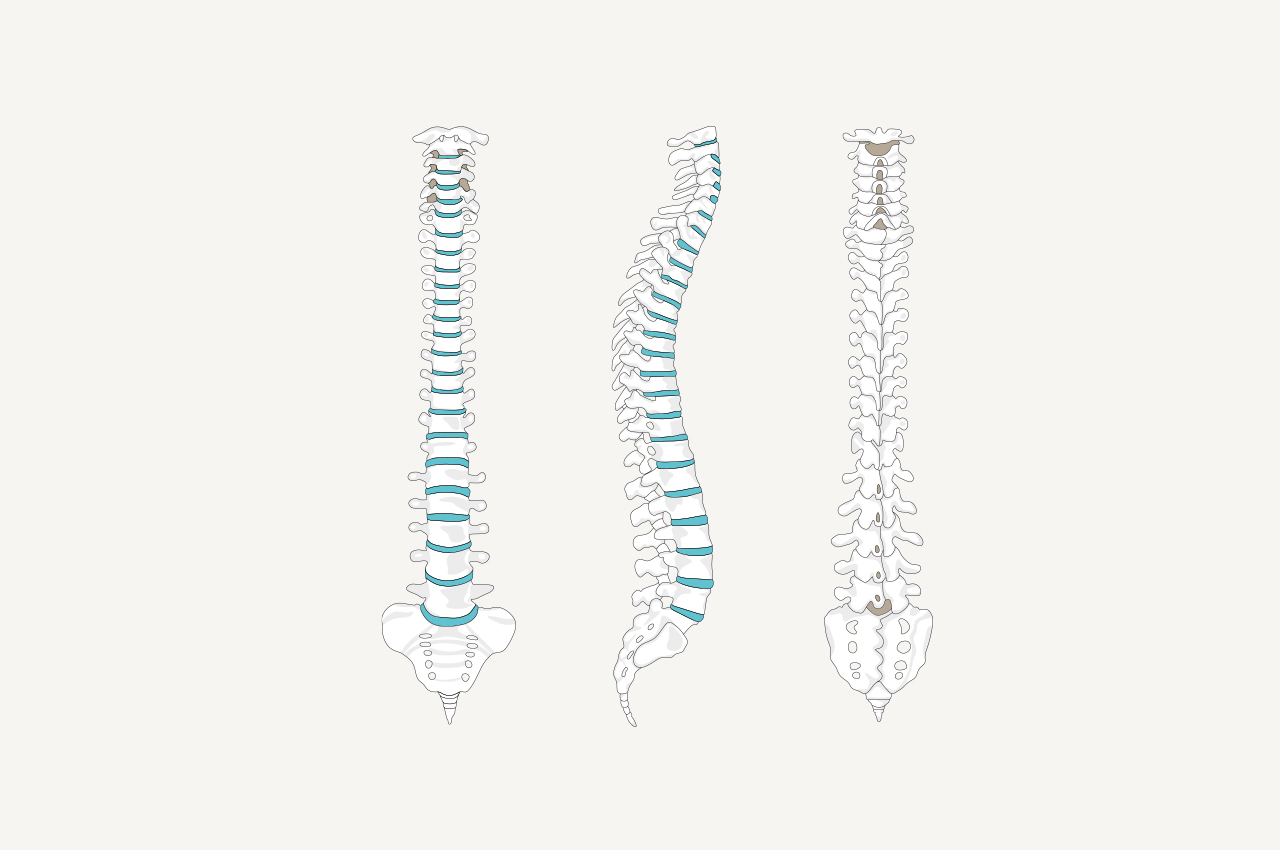Your spine gives your body structure and support, allowing you to move and bend. It also protects your spinal cord (a column of nerves that connects your brain with the rest of your body). Without a spinal cord, you could not move any part of your body, and your organs could not function.
Strengthening your core muscles, located in your lower back, lower abdomen and pelvic floor, is a good way to do this – it also helps prevent lower back pain, increase stability and improve flexibility. Always remember to consult your doctor before trying any exercises, especially if it causes any pain or makes any existing pain worse.
Exercises to support your spine:
Hip crossover stretch
This exercise allows you to gently stretch and release tightness in the piriformis muscle, located in the hip and buttock area, which frequently contributes to lower back pain.
- Lie on your back with your knees bent and about shoulder-width apart.
- Now cross your right ankle over your left knee.
- Use your hands to slowly pull your right knee toward your left shoulder.
- Hold this position for 30 seconds. You should feel a stretch in your hips and buttocks.
- Repeat the above three times on each side.
Abdominal bracing
These exercises use abdominal muscle contractions to strengthen and stabilise muscles close to the spine.
- Lie on your back with your knees bent and shoulder-width apart.
- Lift your left knee up to meet your left hand and push while providing resistance with your hand.
- Hold this position for five seconds, then return to the resting position.
- Repeat the above using your right leg and right hand.
- Continue alternating from right to left for 20 reps total.
Bridge exercise
Helps strengthen the muscles in your back, core, buttocks and hamstrings.
- Lie on your back with your knees bent and shoulder-width apart.
- Gently raise your hips while keeping your shoulders on the floor.
- Make sure to keep your hips in a straight line (imagine a wooden plank resting on your belly)
- Hold this position for five seconds before returning to a resting position.
- Repeat these steps for three sets of 10 reps each.
Alternative squat
Instead of a traditional squat, try this alternative to safely build core and leg strength.
- Sit on the edge of a chair or bed (make sure your feet are flat on the floor).
- Cross your arms over your chest with your fingers touching your shoulders.
- Squeeze your buttocks and push on the floor with your legs as you rise to a standing position, while keeping your back and neck in line.
- Now slowly bring yourself back down to a sitting position, again using the muscles in your legs and buttocks.
- Perform three sets of 10 squats each.
Maintain your spine’s flexibility
- Practice proper posture and make ergonomic adjustments to your workstation.
- Avoid lifting objects that are heavier than 25% of your own body weight.
- Eat a balanced diet that includes calcium and vitamin D to keep your bones strong.
- If you’re a smoker, get the help you need to stop.
- Sleep on a supportive mattress or try a new sleeping position if you have trouble with your back in the morning.
- If you’re regularly stressed, find ways to relax and loosen your back and neck muscles at the end of each day.
- Depression can play a significant role in back pain; seek help if you need it.
- Avoid overdoing exercises with repetitive movements that can lead to muscle strains and sprains.
TAKE NOTE: If you suffer from lower back pain, pay attention to your general posture and how you carry heavy objects to help identify movements that may be responsible. Consult your doctor if lower back pain becomes severe or does not go away with stretches and exercise.
References:
- https://www.resurgens.com/news/5-exercises-healthy-spine
- http://www.thespinehealthinstitute.com/news-room/health-blog/4-easy-exercises-to-strengthen-your-spine
- http://www.thespinehealthinstitute.com/news-room/health-blog/4-easy-exercises-to-strengthen-your-spine
- http://www.thespinehealthinstitute.com/news-room/health-blog/how-to-keep-your-spine-healthy-as-you-age

